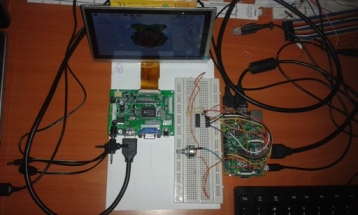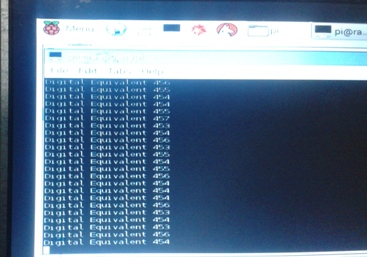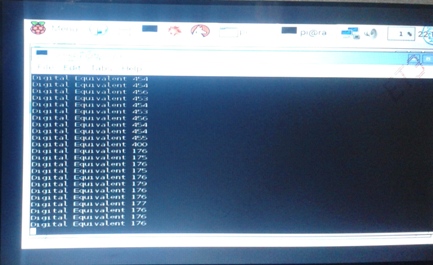Difference between revisions of "Instrumentation"
| Line 8: | Line 8: | ||
[[File:ADC setup.jpg|left|ADC setup]] | [[File:ADC setup.jpg|left|ADC setup]] | ||
| − | <div>[[File:Adcresult1.jpg|x215px|Sample results]] [[File:Adcresult2.jpg|x215px|Sample result]]<br/></div> | + | <div>[[File:Adcresult1.jpg|x215px|Sample results]] [[File:Adcresult2.jpg|x215px|Sample result]]<br/></div><div><br/></div><div><br/></div><div><span style="font-size:larger;"</span><br/></div><div><span style="font-size:larger;">'''Real-time Remote Force Measurement and Recording'''</span></div><div style="text-align: justify;"><span style="font-size:larger;"><span style="font-family:times new roman,times,serif;">Telemetry is important in instrumentation as it enables collection of data from several measurement points at inconvenient locations or inaccessible areas transmit that data to a convenient location and present the several individual measurements in a usable form.<br/></span></span></div><div style="text-align: justify;"><span style="font-size:larger;"><span style="font-family:times new roman,times,serif;"><br/></span></span></div><div style="text-align: justify;"><span style="font-size:larger;"><span style="font-family:times new roman,times,serif;">The stain gauge on the principle that a resistance of a wire of a semiconductor is changed by elongation or compression due to externally applied stress. It is commonly used in the measurement of force , torque and displacement. The output signal of the strain gauge requires amplification and AD620 (operational amplifier) chip has been used for this purpose.</span></span><br/></div><div style="text-align: justify;"><span style="font-size:larger;"><span style="font-family:times new roman,times,serif;"></span></span><br/></div><div style="text-align: justify;"><span style="font-size:larger;"><span style="font-family:times new roman,times,serif;">After amplification, the signal is converted to digital form using similar procedure in lab 1 described above. WiFi network is used for transmission of the digital output from the remote location to the central control room. At the receiver side, data is first displayed on the monitor for purpose of real time monitoring. Its later stored in a database developed using mySQL.</span></span><br/></div><div style="text-align: justify;"><span style="font-size:larger;"><span style="font-family:times new roman,times,serif;"></span></span><br/></div><div style="text-align: justify;"><span style="font-size:larger;"><span style="font-family:times new roman,times,serif;">The procedure to be used is detailed in the lab manual (see pdf) provided for this lab.</span></span><br/></div><div><span style="font-size:larger;"><span style="font-family:times new roman,times,serif;"></span></span><br/></div><div><span style="font-size:larger;"><span style="font-family:times new roman,times,serif;"></span></span><br/></div> |
Revision as of 22:08, 13 July 2015
Instrumentation
This course is taught in the third year of the electrical engineering curriculum. The course mainly deals with transducers for non-electrical quantities and their application to measurement of primary variables. Other areas covered in this course include signal conditioning, remote sensing techniques, microprocessor applications in instrumentation, noise and interference reduction, data storage, recording and display systems.
We aim to develop a laboratory exercise that will introduce the students to signal conditioning and remote sensing. Remote sensing is important in instrumentation as it enables collection of data from measurement points at inconvenient locations.
In this lab, the students will use a strain gauge to measure forces and transmit data to a different location via a wireless module. The Raspberry Pi will receive the data, perform signal conditioning and display the measurements.
Two labs are under development as follows
Analog to Digital Conversion
Most of signals from sensros are analogue in form. Raspberry Pi being a microprocessor based systems handles only digital signals. It has no inbuild analogue to digital converter. This necessitates for development of an analogue to digital converter in instrumentation.
MCP3008 analogue to digital converter chip is used in this work. It is a 10 bit, 8 channel IC as shown in the schematic. A variable resistor is used as the source of the analogue signal and is connected to 5 V source. The analogue input (0 to 5 V) is fed to one of the 8 channels of the MCP3008. Other connections to be made are described in the lab manual (see pdf) provided for this lab.
By adjusting the variable resistor, different values of analog voltages are used for testing the converter. The output (digital equivalent in decimal form) is displayed on the monitor
The setup and sample results for this lab are shown below


